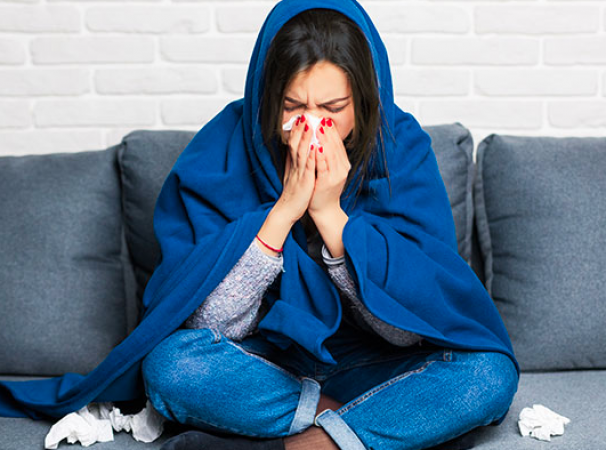
During the rainy season, water builds up around roads and houses, causing a variety of diseases to spread. There is no doubt that rain relieves the heat and makes everyone happy, but if precautions are not taken during this time, it is also possible to become ill. Let us look at how you can stay safe during this period.
Most of the country has been flooded by the rainy season. On the one hand, drizzling rain provides relief from the scorching sun, but it also causes a slew of serious diseases. Food spoils quickly due to the increased humidity and moisture in the rain, so it is best not to eat outside. Furthermore, the accumulation of water in various locations provides an opportunity for the population of mosquitoes to grow. Mosquito bites can also cause serious diseases such as dengue fever and malaria.
The risk of which dangerous diseases increases in the monsoon?
Let us know about the six dangerous diseases that occur in the monsoon:
Malaria
Mosquito bites are also responsible for this infection. Malaria mosquitoes breed in stagnant water near your home, which is also the primary cause of this disease. Malaria symptoms include a high fever, chills, shivering, excessive sweating, and severe anaemia. If the disease is not treated promptly, it can progress to cerebral malaria, a potentially fatal condition. Seizures, kidney failure, jaundice, and respiratory problems can also occur.
Dengue
Dengue fever is most common during the rainy season, when it spreads like wildfire. According to the National Centre for Vector-Borne Disease Control, thousands of people die in India each year as a result of this disease. More than one lakh dengue cases were reported in 2021. The disease is spread by the bite of a female Aedes mosquito, which bites during the day or shortly before sunset. Dengue fever is characterised by body aches and a high fever. Aside from that, people experience sweating, headaches, eye pain, nausea, vomiting, weakness, rashes, light bleeding, and low blood pressure. In severe dengue cases, symptoms such as shortness of breath and a low platelet count can be fatal.
Chikungunya
Chikungunya is another mosquito-borne disease that thrives in stagnant water. The Aedes albopictus mosquito spreads Chikungunya. Symptoms appear three to seven days after being bitten by an infected mosquito. This includes a fever as well as body and joint pain.
Diarrhoea
Infections such as diarrhoea are also common during the rainy season. Food spoils quickly due to humidity, and the humidity in this season can cause stomach upset. Additionally, as infections increase, so does the risk of diarrhoea.
Typhoid
Typhoid cases rise during the rainy season, which is usually caused by contaminated food and water. Its symptoms include a persistent high fever, tiredness, abdominal pain, and a loss of appetite, which results in weight loss.
Influenza
Influenza cases begin to rise as humidity levels and temperatures rise. The symptoms of this infection include fever, muscle aches, a sore throat, nasal congestion, and a dry, persistent cough. This causes symptoms such as pneumonia, asthma, diabetes, and heart disease.
How can dangerous diseases be avoided during the rainy season?
According to health experts, the relationship between monsoons and diseases is old. Nevertheless, it is important to have knowledge about the causes and treatment of these diseases so that you can avoid falling ill. Take care of these things to protect yourself from diseases in the rainy season:
Take care of cleanliness.
Wash your hands several times a day.
Do not eat outside food, especially from street vendors.
Drink water after filtering or boiling it.
Increase your immunity.
Always cover your mouth and nose while sneezing or coughing.
Use repellents.
Do not allow water to stagnate near your house.
Enjoy samosas and chaat in the rain without regret, Try these oil-free, tasty snacks
If you want to keep your skin spotless during the rainy season, follow these 5 tips